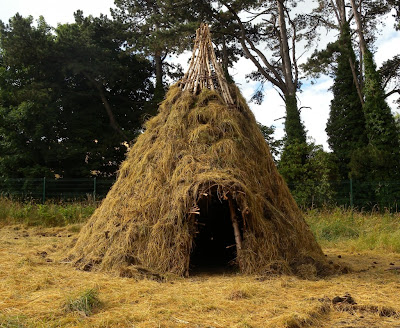Scientific Minds Want To Know
Archaeologists from University
College Dublin have built a replica of a Mesolithic or Middle Stone Age
house on the Belfield campus to better understand how humans lived at
the time. |
| Replica of 10,000 year old mesolithic dwelling built by UCD experimental archaeologists on campus [Credit: UCD] |
During the Mesolithic or Middle Stone Age humans made and used a variety of wooden and stone tools (including stone axes for carpentry), and lived a hunter gatherer lifestyle.
“Our reconstruction of this Mesolithic house is part of the UCD Centre for Experimental Archaeology,” says Dr Graeme Warren, UCD School of Archaeology.
The Mesolithic house is located on a site on the UCD Belfield campus set aside for Experimental Archaeology.
“Through experimental archaeology we are working to better understand the past by engaging materially with the sorts of things that people did in the past. At this location we have completed stone working, flint tool production, we’ve made stone axes and fired pottery, and now we’ve built this Mesolithic house.”
The structure will be left to decay so archaeologists can estimate how long this type of building lasted before early settlers decided to rebuild or move on.
According to Dr Warren, this type of experimental archaeological work is important because it provides scientific information about the material worlds in which people lived in the past - information which isn’t available from the surviving archaeological materials alone.
You can follow progress on the project on Dr Graeme Warren’s Blog.

No comments:
Post a Comment